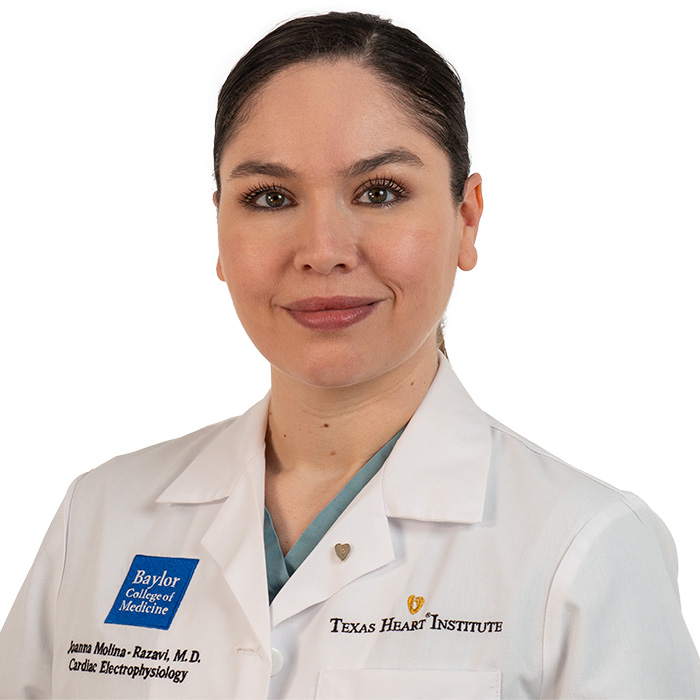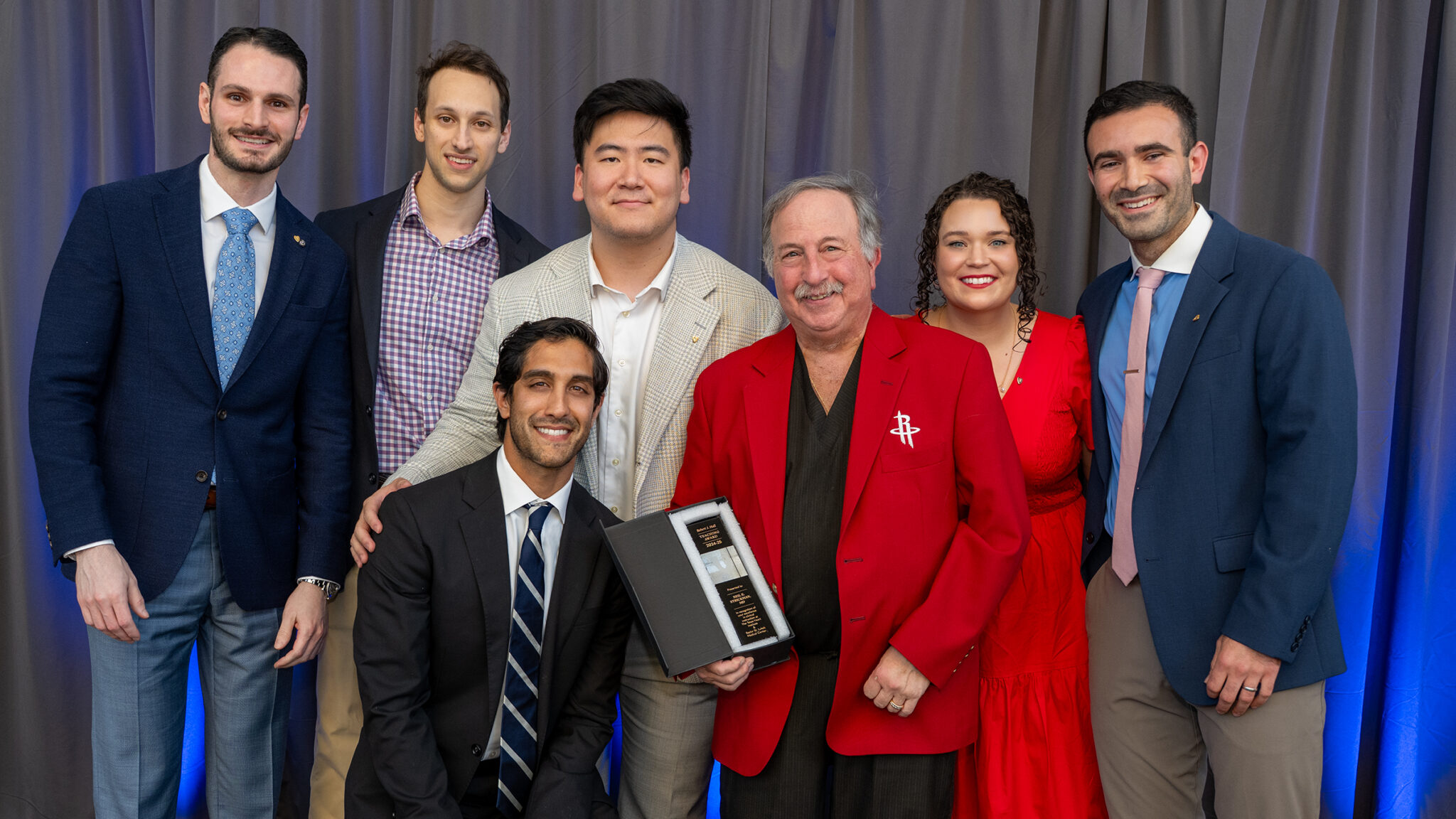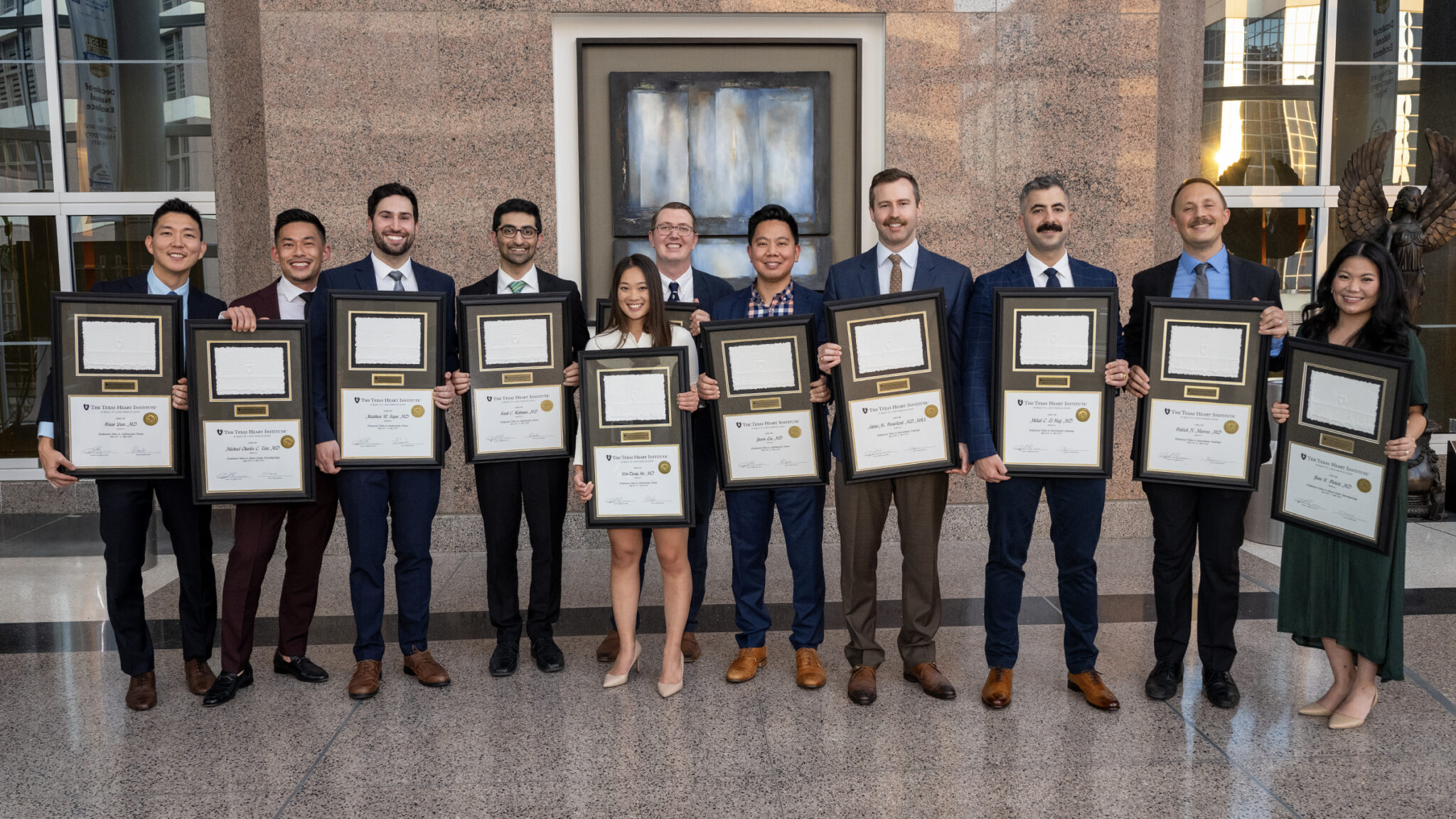
Dr. Joanna Molina Razavi is a cardiac electrophysiologist at The Texas Heart Institute and Baylor College of Medicine. A native of Tijuana, Mexico, she attended medical school at Universidad Autonoma De Baja in California, after obtaining the highest score statewide in the medical school entry examination. Dr. Razavi then completed medical residency training at Baylor College of Medicine and became the first female international graduate of The Texas Heart Institute Cardiology Fellowship training program and the first Hispanic woman to pursue an additional cardiac electrophysiology subspecialty training program at THI. Few women choose this highly competitive career path, and she has garnered an international reputation as one of the best teachers in her specialty field.
See PublicationsTexas Heart Institute Positions
- Teaching Staff, Cardiovascular Disease Fellowship
- Teaching Staff, Clinical Cardiac Electrophysiology Fellowship
- Physician Ambassador, Center for Women’s Heart & Vascular Health
Interests
Education
-
Medical School:
Universidad Autonoma de Baja California
-
Residency:
Baylor College of Medicine
-
Fellowships:
Texas Heart Institute / Baylor St. Luke’s Medical Center (Electrophysiology)
Academic & Clinical Affiliations
- Baylor College of Medicine
- Baylor St. Luke's Medical Center
Honors, Awards and Memberships
Publications
Recent News

Presenting the Future of Cardiovascular Medicine: The Texas Heart Institute Fellowship Program Celebrates 2025 Cardiology Graduates
On the evening of June 6, 2025, The Texas Heart Institute at Baylor College of Medicine (THI) celebrated the accomplishments...

The Texas Heart Institute Fellowship Program Congratulates 2024 Cardiology Graduates
On June 7, The Texas Heart Institute honored 11 graduates of its Cardiovascular Disease Fellowship and subspecialty cardiology fellowship programs....

Texas Heart Institute Cardiac Society Holiday Event 2023
The Texas Heart Institute Cardiac Society recently organized a special celebration at the elegant St. Regis Hotel in Houston to...

.svg)


